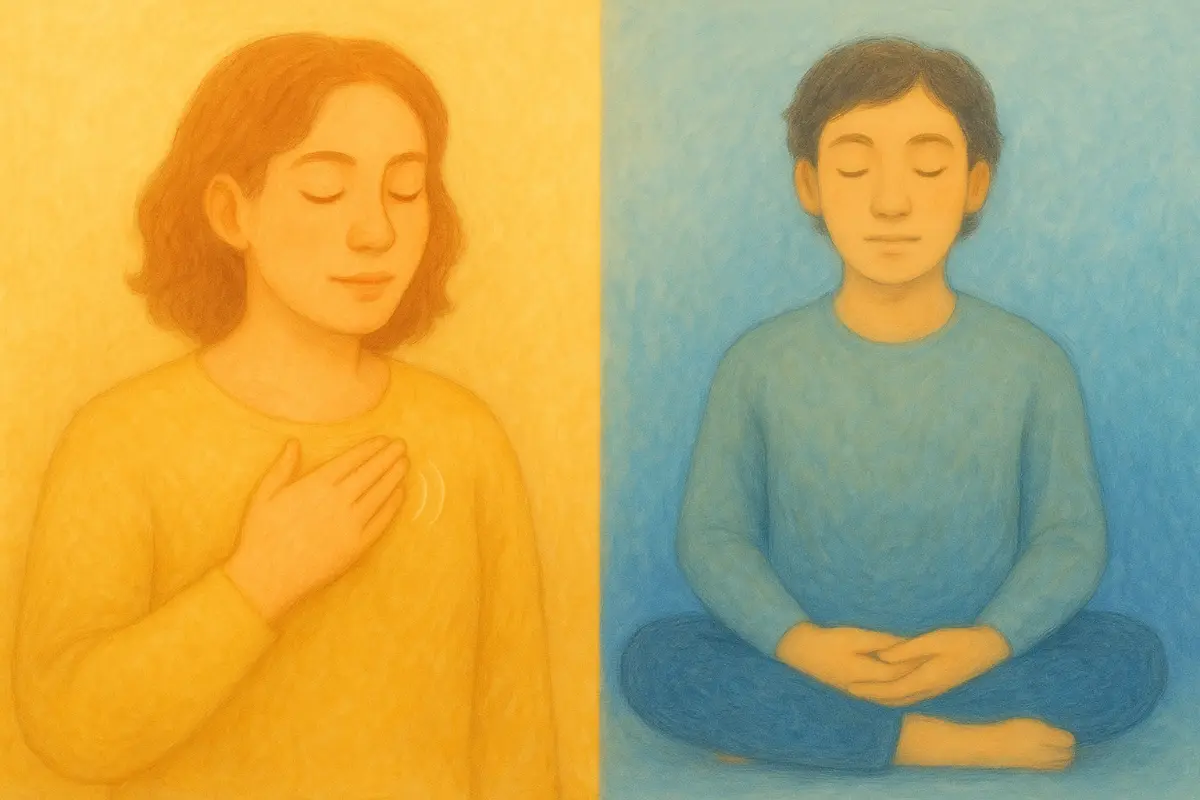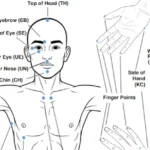EFT vs. Meditation: Which Mindfulness Tool Is Right for You?
The Micro-Habits That Changed Everything
Introduction: The Rise of Mind-Body Micro-Practices
It started with five minutes. One tapping round before a work call. One quiet meditation on the back porch. Not a “total transformation”—just less tension, sharper focus, more breath. And then, a week later, things felt different.
That’s how most people begin—not with a retreat, or a guru, or a grand commitment, but with a small moment of self-regulation in the middle of a chaotic day.
In the past two decades, mind-body practices have moved from the margins to the mainstream. Among the most widely used—and surprisingly research-backed—are meditation and Emotional Freedom Techniques (EFT), or tapping. Both reduce stress. Both enhance emotional balance. But they do it differently, with different mechanisms, energies, and effects.
So which one should you practice? Maybe the better question is: why not both? Here’s how EFT and meditation compare—plus why combining them may be the best decision you can make for your mental and emotional health.
What Is EFT (Tapping)?
EFT is a self-regulation technique that blends ancient acupressure points with modern psychology. You tap gently on points across the face and body while speaking about a thought, memory, or emotion. The goal? To reprocess emotional charge and soothe the nervous system—in real time.
Key Features of EFT:
- Active participation: You physically tap and speak, which helps discharge nervous energy.
- Targeted focus: EFT is highly specific—used for triggers, cravings, fears, and pain.
- Somatic + cognitive: It works both through the body (acupressure) and mind (exposure and reappraisal).
What Is Meditation?
Meditation is a broad term for stillness-based practices that train your attention and awareness. Whether focusing on the breath or observing thoughts pass by, the purpose is to develop a calm, spacious relationship with your inner world.
Key Features of Meditation:
- Stillness and silence: Most forms are practiced seated, quietly, and without movement.
- Broad awareness: Instead of fixing or changing thoughts, you witness them without judgment.
- Cumulative effect: Benefits grow over time, often leading to more resilience, clarity, and compassion.
Science-Backed Strengths of Each
✅ EFT: Fast-Acting Relief for Stress, Trauma, and Triggers
EFT has been validated by multiple randomized controlled trials and meta-analyses. A 2012 RCT found that just one EFT session led to a 24% drop in cortisol, the body’s main stress hormone—significantly more than talk therapy or no treatment (Church et al., 2012). A 2016 meta-analysis of 14 RCTs found a large and significant reduction in anxiety symptoms using EFT (Cohen’s d = 1.23) across 658 participants (Clond, 2016). For trauma, EFT is especially promising. A 2017 review reported major PTSD symptom reduction after just 4–10 sessions, with low dropout rates and sustained benefits (Sebastian & Nelms, 2017).
✅ Meditation: Long-Term Transformation of Mood, Attention, and Brain Health
Meditation boasts one of the most robust research portfolios in mind-body science. A major review in JAMA Internal Medicine concluded that meditation leads to significant reductions in anxiety, depression, and pain in clinical settings (Goyal et al., 2014). Brain imaging studies show that long-term meditators have thicker gray matter in areas associated with emotional regulation, focus, and self-awareness (Holzel et al., 2011). Regular mindfulness also reduces amygdala activity, helping the brain become less reactive to stress (Tang et al., 2015).
EFT vs. Meditation: A Side-by-Side Look
| EFT (Tapping) | Meditation | |
|---|---|---|
| Mode | Active (movement + verbal focus) | Passive (stillness + quiet focus) |
| Time Investment | 2–15 mins, often immediate effect | 5–30 mins, cumulative over weeks |
| Main Focus | Specific emotional triggers/issues | General awareness and acceptance |
| Best Use Case | When you’re flooded, agitated, or stuck | When you’re seeking calm and clarity |
| Learning Curve | Easy; noticeable results in 1–2 tries | Moderate; requires consistent effort |
| Top Benefits | Relief from anxiety, PTSD, cravings, pain | Resilience, attention, long-term wellbeing |
When to Use Each (and Why You Don’t Have to Choose)
🟩 Use EFT when:
- You’re in the middle of a panic, craving, or stress spiral.
- You want to address a specific fear or trauma.
- You’re too wired or restless to sit still.
- You need fast, targeted emotional release.
“Meditation frustrated me at first,” says Anna, a schoolteacher. “Tapping gave me something to do when my mind was loud. It helped me regulate fast. I use both now—tapping for the acute moments, meditation for staying centered.”
🟦 Use Meditation when:
- You’re cultivating long-term mental clarity and resilience.
- You want to observe and detach from recurring thought patterns.
- You have time and space for reflection.
- You feel ready to witness rather than change.
“I start most mornings with meditation,” says Devon, a dad and project manager. “But if my nerves spike or I’m about to snap at someone—I’ll tap. It’s like a full toolkit, not just one tool.”
How EFT and Meditation Work Together
More therapists and coaches now encourage a two-step practice: Use EFT to calm the system, then use meditation to deepen the integration.
Why this works:
- 🌿 EFT clears the emotional noise, making it easier to slip into stillness.
- 🌿 Meditation extends EFT’s benefits, allowing the nervous system to rewire at a deeper level.
- 🌿 Each supports the other: tapping enhances acceptance, while mindfulness sharpens awareness—two sides of the same inner balance.
How to Build Your Hybrid Practice
Here’s how many people naturally blend the two:
- ➤ Before Meditation: If your mind is racing or you feel blocked, spend 3–5 minutes tapping on what’s bothering you. Then sit quietly. You may find stillness more accessible and the meditation deeper.
- ➤ After Tapping: Once you’ve released emotion or cleared a mental trigger, sit for 5–10 minutes in breath awareness. This helps your brain and body integrate the calm.
- ➤ As Needed: Use EFT when triggered, and meditation for maintenance. You’re not building a ritual—you’re building resilience on demand.
Conclusion: You Don’t Have to Choose—You Get to Combine
Meditation and EFT aren’t in competition. They’re two micro-practices with macro impact—tools for emotional freedom and mental clarity. Meditation is your daily anchor: quiet, slow, powerful over time. Tapping is your emotional first aid kit: active, fast, and highly personal.
Used together, they form a comprehensive approach to mind-body wellness. One grounds you. The other frees you.
So don’t pick one. Start small. Try both. Let them complement, not compete. Because the most effective mindfulness tool isn’t just the one that works—it’s the one you’ll actually use.



